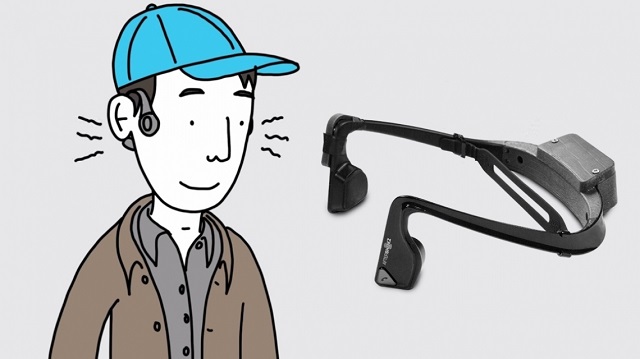The Redmond tech giant is not concerned only about selling its operating systems, consoles and peripherals, but also about making life better for all of us, and especially for the ones who require technology to live a normal life.
There are 246 million visually-impaired people in the world, and if you feel like there are too many gadgets for them, I tell you that there aren’t enough of them. Exoskeletons can help paralyzed people move, so why not develop gadgets that can help the visually-impaired, and even the blind walk normally on a heavily-traveled street? For the blind, simply walking on an alley can give them thrills, but they might be able to get rid of that by using Microsoft’s bone conduction headset.

“Cities need to be built for absolutely everyone, but no one’s going to knock them down and make them accessible,” says Chris Yates, customer experience lead for Guide Dogs, the charity that’s helping Microsoft perform the trials between Reading and London. “What we’re doing is using existing infrastructure and working around it with technology.”
The prototype makes use of Microsoft’s 3D soundscape technology, plus a Windows Phone for GPS data. The headset correlates the data received from the smartphone with the one generated by the Wi-Fi and Bluetooth beacons placed in trial locations, and provides audio guidance through bone conduction. With ears left uncovered, the blind can still pay attention to what’s happening around them. More importantly, the device can even be used by people who have trouble hearing, as the sound is transmitted directly to the inner ear.
“We’ve only done a concept, it’s still pure research and development, but the possibilities are endless and the impact is incredible if we get this right,” added Jenny Cook, head of strategy and research for Guide Dogs.
The Independence Day video, which is in no way related to the Will Smith flick, nor to the American National Day, explains using a simple and cute animation how the bone conduction headset developed by Microsoft can help visually-impaired people to navigate through the city.
Microsoft’s bone conduction headset stands to show that wearable tech can have a major impact on the lives of people suffering from various conditions. I’m sure that the company will look to expand its line of wearables beyond fitness bands.
Be social! Follow Walyou on Facebook and Twitter, and read more related stories about the Braigo budget Braille printer made of LEGO, or the world’s first Braille smartphone.










